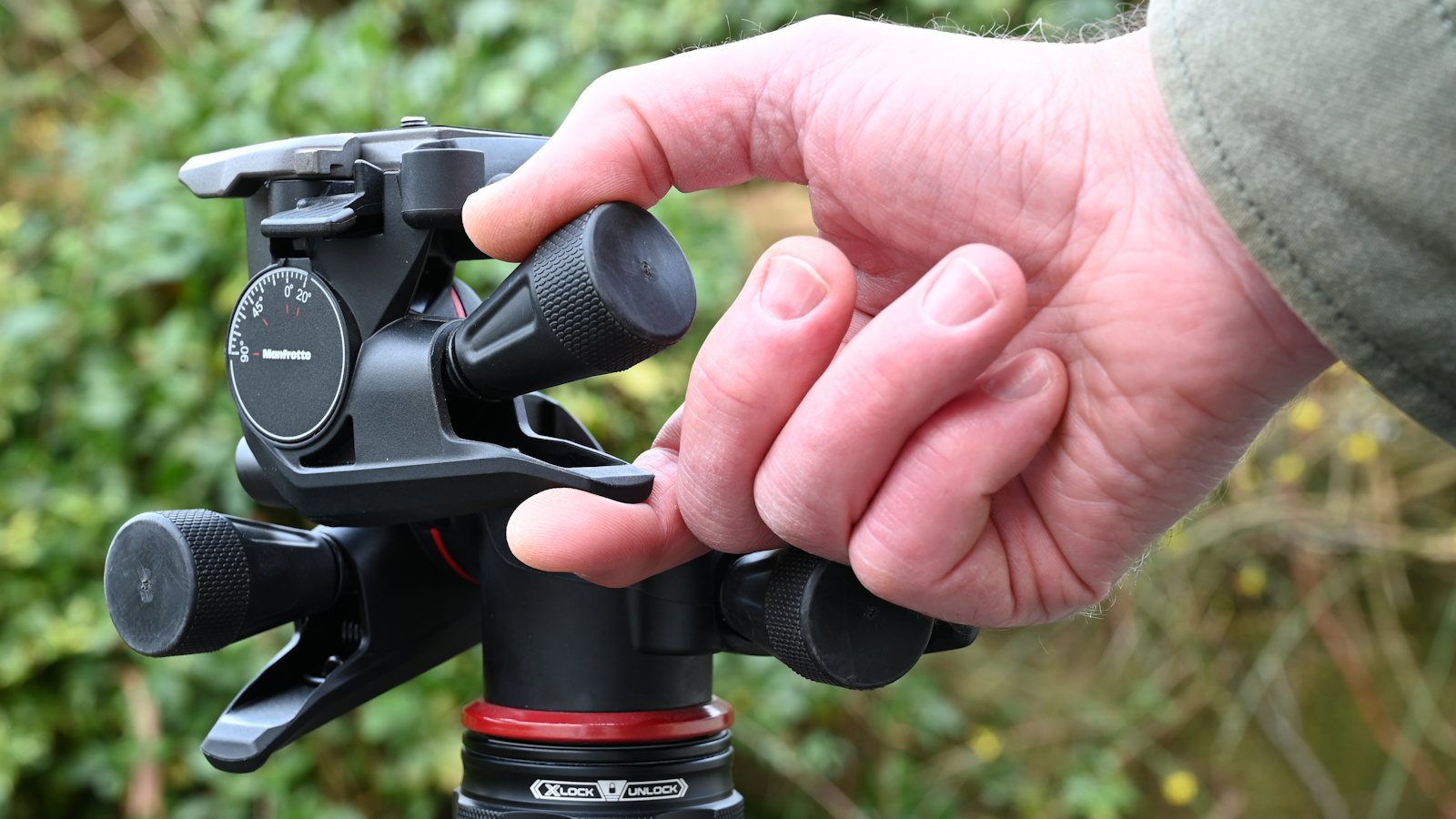
Compared with ball heads, the Manfrotto XPRO Geared 3-way head stays put after being adjusted. While ball heads enable the speed and ease of making adjustments in all three tilt, pan and swivel directions with a single locking knob, they typically tend to sag a bit after tightening the clamp and releasing your grip on the camera. You can experience the same kind of problem with a conventional 3-way head, albeit to a lesser extent.
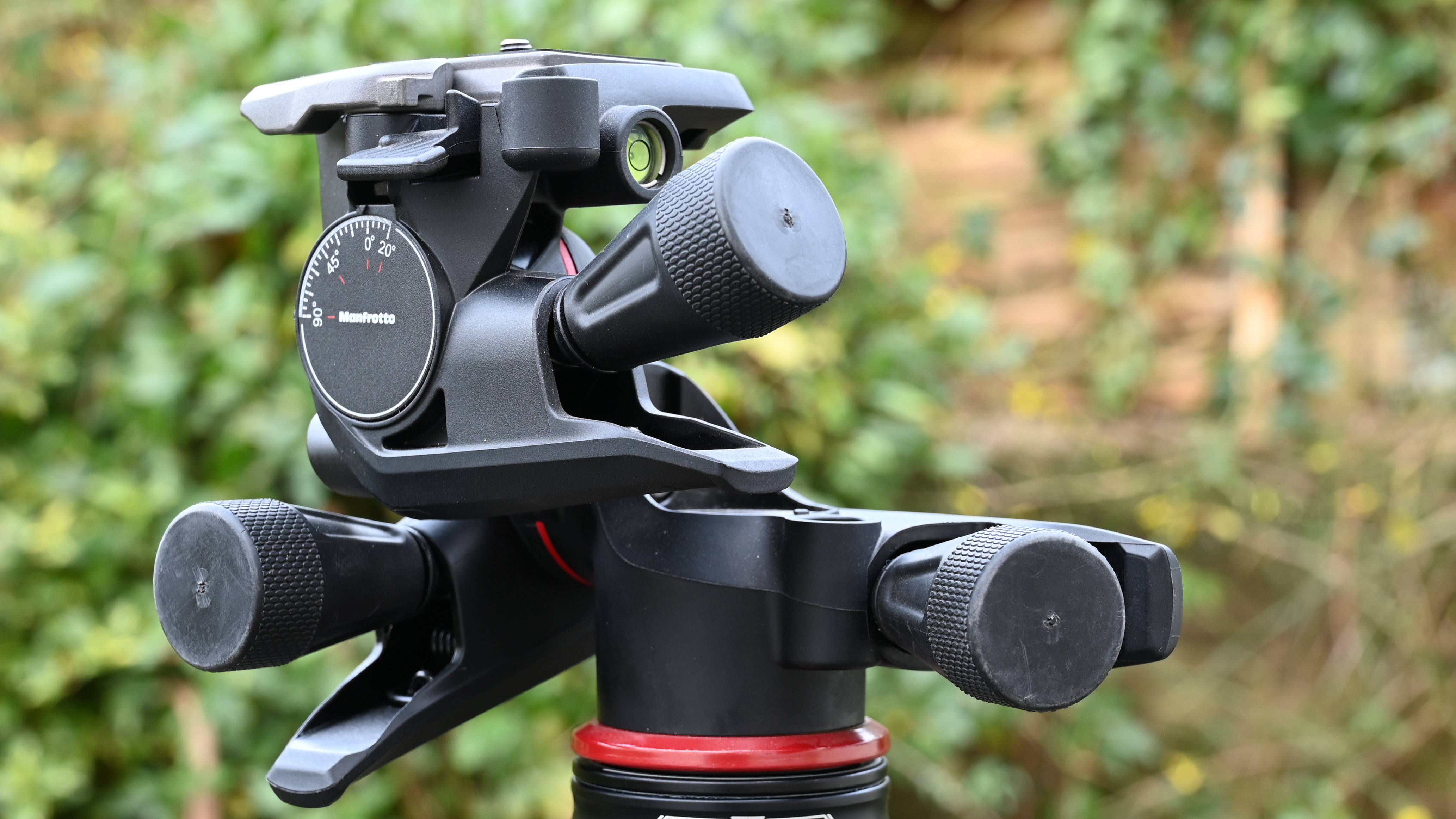
As a geared head, this one is designed so that the full weight of the camera is borne by the head even while you’re making adjustments. That cuts out any sag and maintains the camera position you intended. Furthermore, the micrometric adjustment knobs for pan, tilt and swivel enable very fine and precise adjustments.
Specifications
Material: Technopolymer
Maximum load: 4kg / 8.8 lb
Base diameter: 60mm
Plate type: 200PL-14
Degrees per turn: 9.5 degrees
Lateral tilt: -90 / +20 degrees
Front tilt: -20 / +90 degrees
Bubble/spirit levels: 3
Weight: 0.75kg / 1.65 lb
Key features
For positional adjustments, the XPRO Geared head uses a separate worm drive for each of its three directional movements. The mechanism for each is based on a revolving threaded cylinder connected to a control knob, which is paired to a toothed gear wheel. By twisting one of the control knobs, you can apply very fine and precise independent adjustments to pan, tilt and swivel, for example to ensure that verticals remain vertical and that landscape shots are on the level.
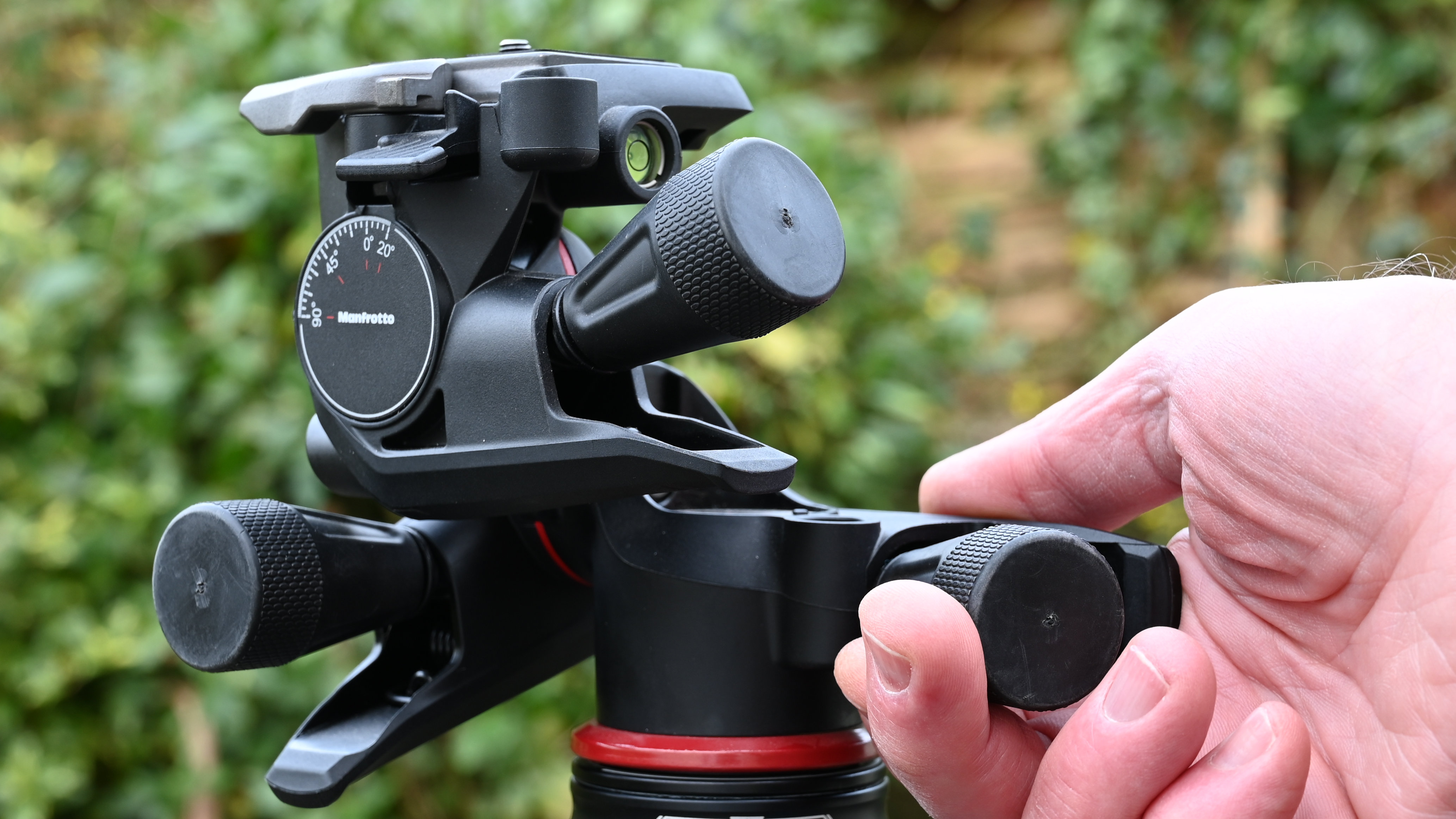
While the micrometric control knobs are great for fine adjustments, they’re a pain for larger positional changes. With this in mind, the head features a trigger-action clutch mechanism for each of its three controls. With a simple squeeze, you can disengage the worm drive and make large changes quickly and effectively, then go back to the using the micrometric knobs for fine adjustments.
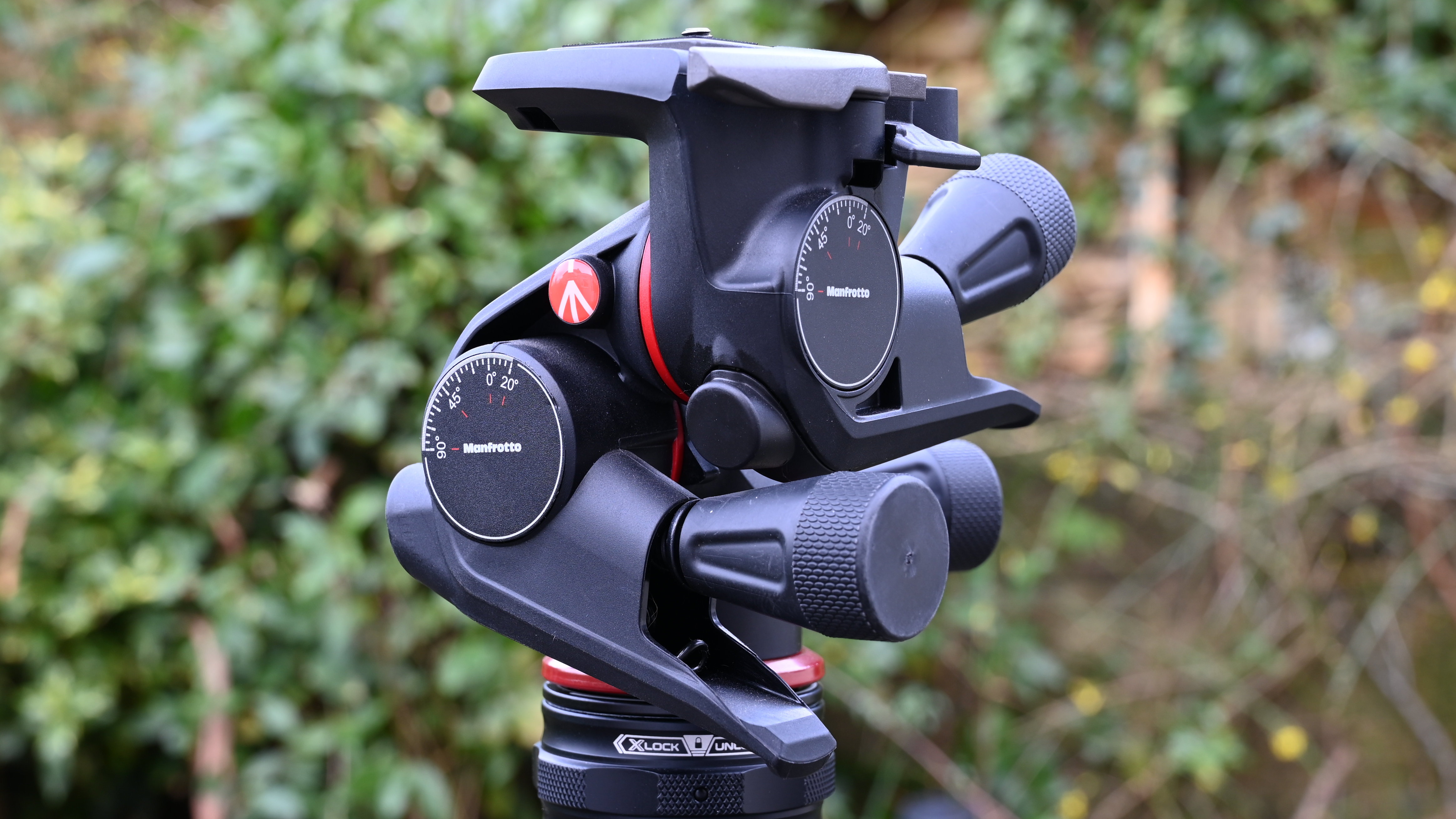
For a visual guide, rotary scales are featured for all three axes of movement, calibrated in 5-degree increments. Tilt and swivel movements stretch from -20 to +90 degrees, whereas panning operates through a full 360 degrees. Further help is on hand from a bubble level on the base of the head, for leveling the tripod legs. Two additional bubble levels are fitted to the camera platform, for leveling the actual camera in either landscape or portrait orientation shooting.
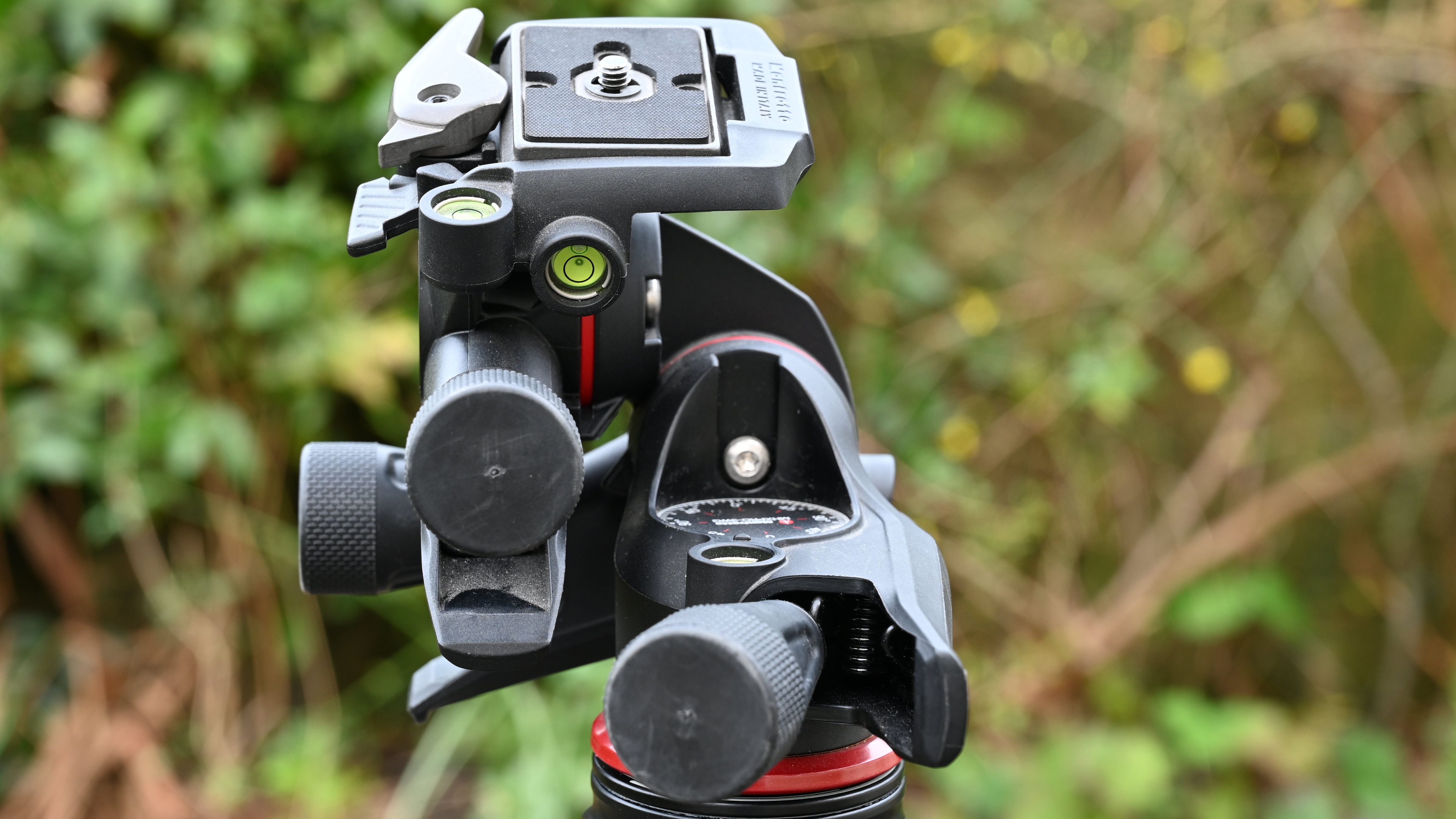
Build and handling
Unlike most geared heads, the XPRO is made from ‘Technopolymer’, which is basically a high-performance plastic. By contrast, the pricier Manfrotto 410 Junior geared head is built from aluminum. A bonus in terms of handling is that the XPRO is particularly lightweight for a geared head, at 750g. That’s not much more than half the weight of the Manfrotto 410 Junior and, despite this, there’s not much difference in the maximum load rating, stated as 4kg for the XPRO and 5kg for the heftier 410 Junior.
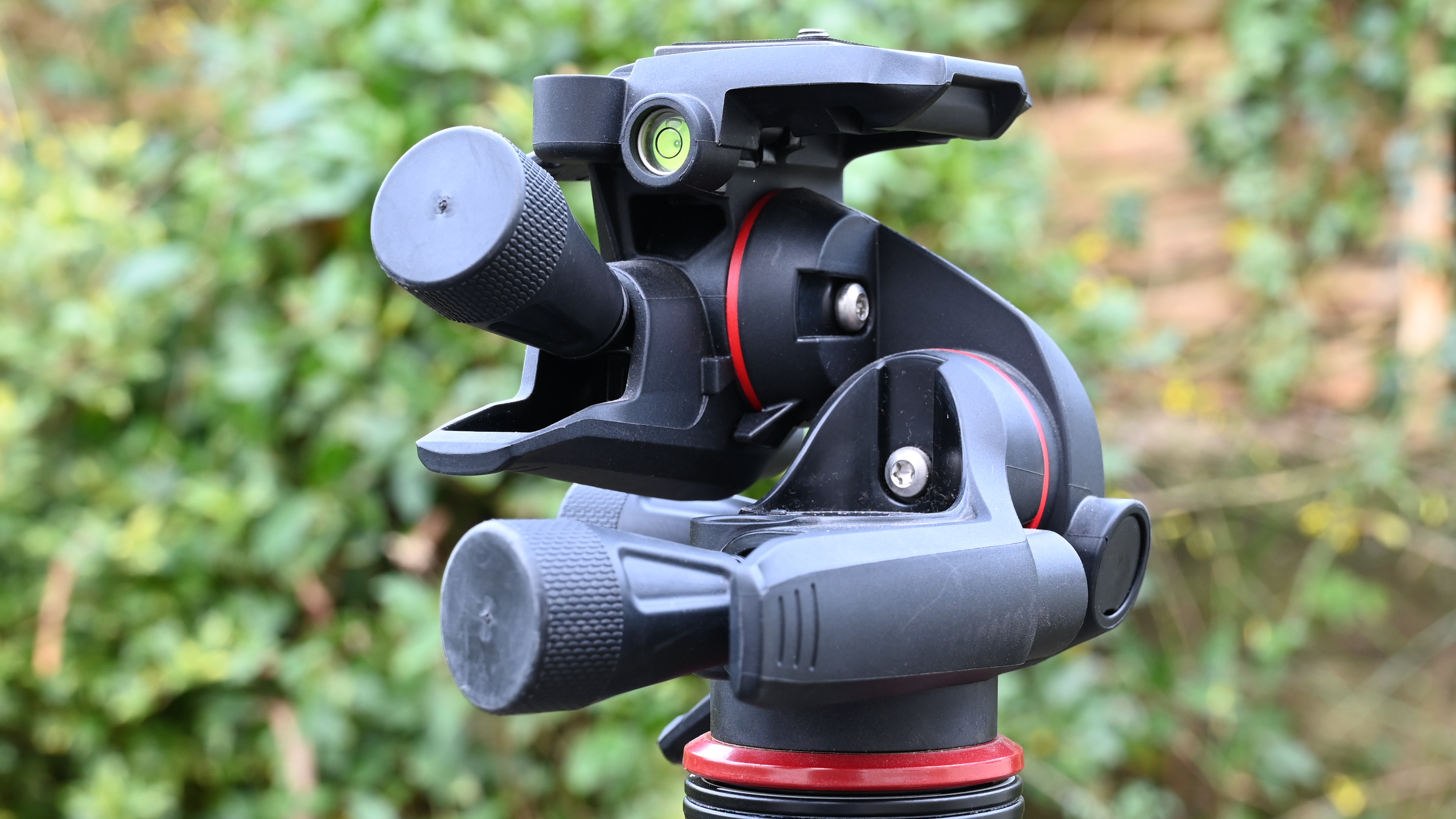
The XPRO’s handling is very refined. The trigger-action clutch system works as advertised and is particularly intuitive in use. A full 360-degree turn of the micrometric knobs gives a 9.5-degree adjustment in any of the pan, tilt and swivel directions. That gives a good level of fine control, although not quite as fine as in the 410 Junior, which gives a 7.2-degree adjustment for each full turn.
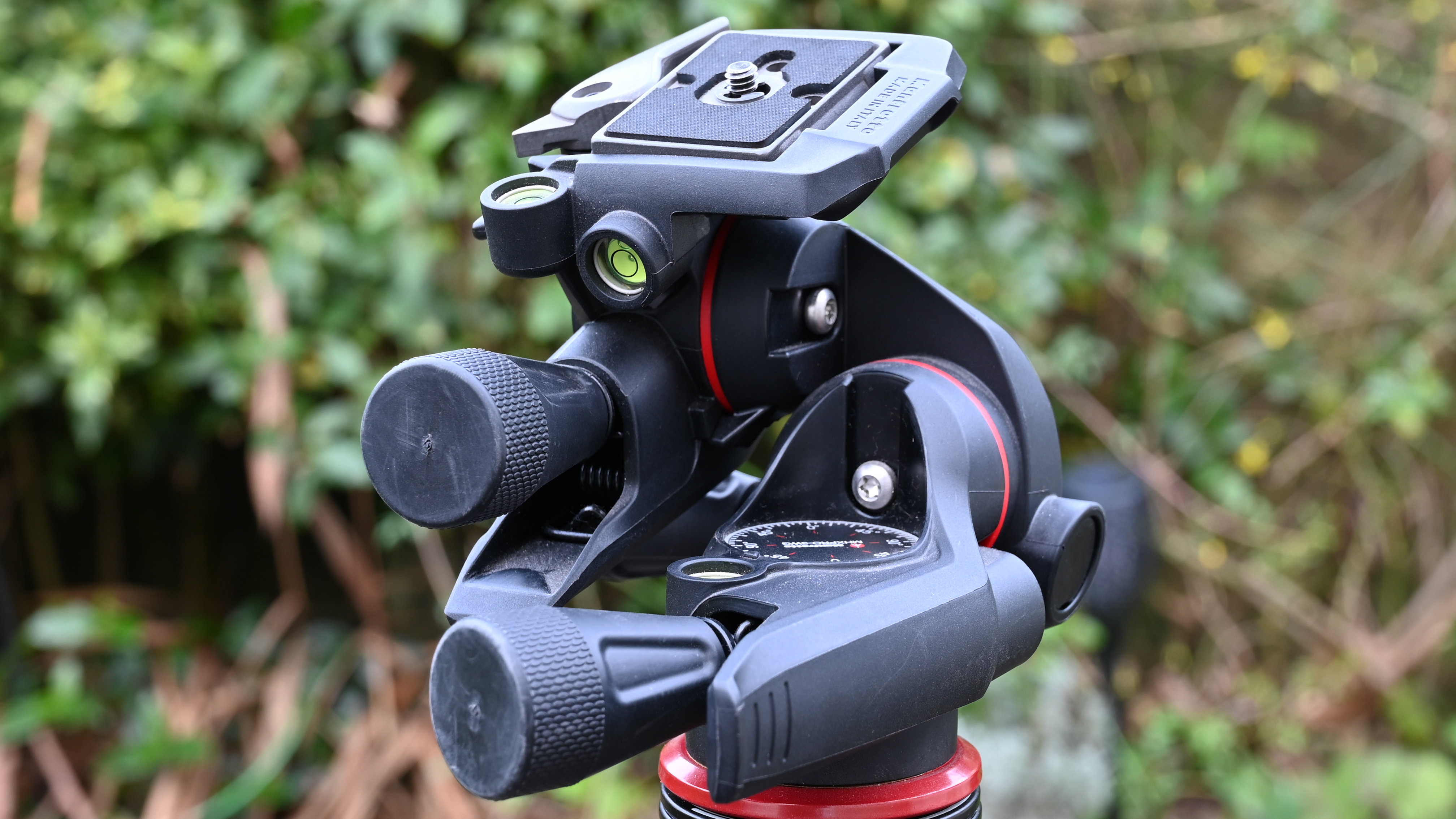
Like many Manfrotto tripod heads, the XPRO Junior features a 200PL-14 quick-release plate. Again, it’s quick and easy to use and offers a good level of rigidity. However, being a proprietary Manfrotto design, it’s certainly not as standard as an Arca-Swiss plate.
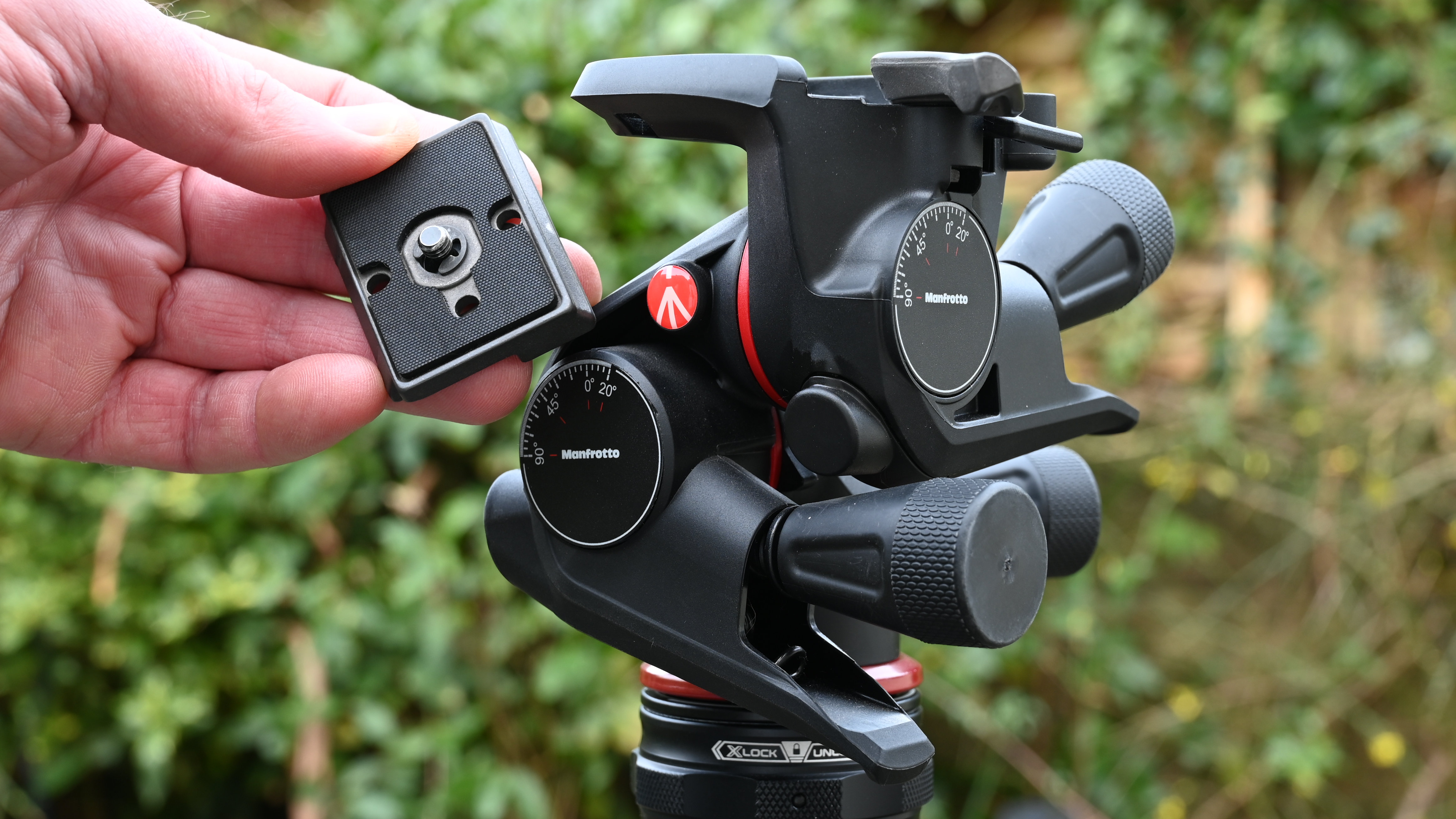
Performance
We found the performance of the XPRO geared head to be good rather than entirely great. The plastic build certainly isn’t as rigid as with competing aluminum based geared heads and we noticed more flexing than with the metal 410 Junior. Even so, rigidity is certainly adequate for a full-frame DSLR or mirrorless camera with the likes of a 24-70mm f/2.8 lens attached. That said, we found that the XPRO was noticeably more prone to flexing than the 410 Junior when mounted with a camera and heavier 70-200mm f/2.8 lens attached.
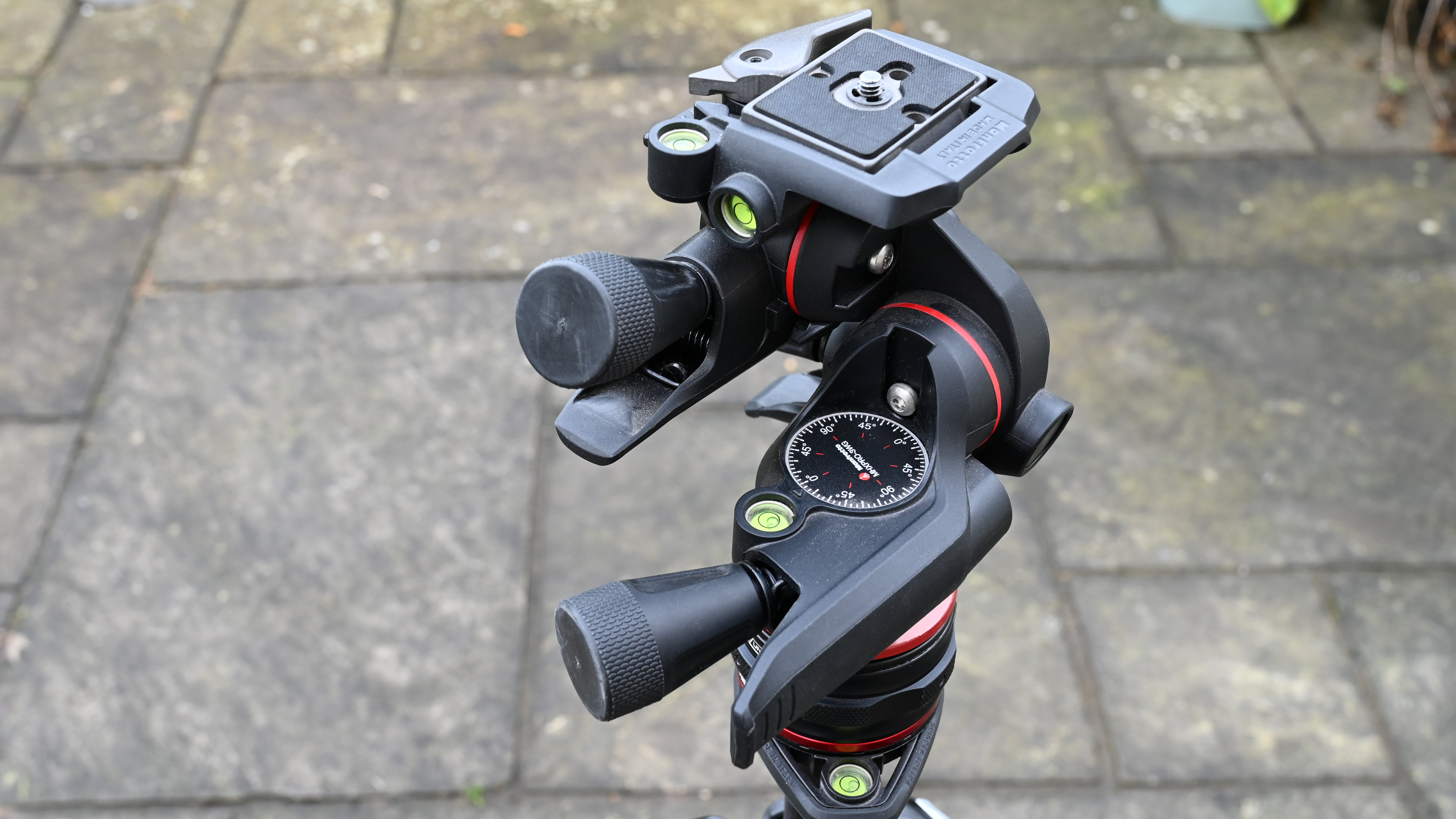
Verdict
When you need the ultimate precision in lining up your camera for critical architectural, landscape and many and varied other shots, there’s no beating a geared tripod head. This one from Manfrotto is less expensive than most but offers a neat range of features and is dead easy to use. We mostly love it but, being made from plastic rather than metal, it’s not the sturdiest example around and a little prone to flexing.








